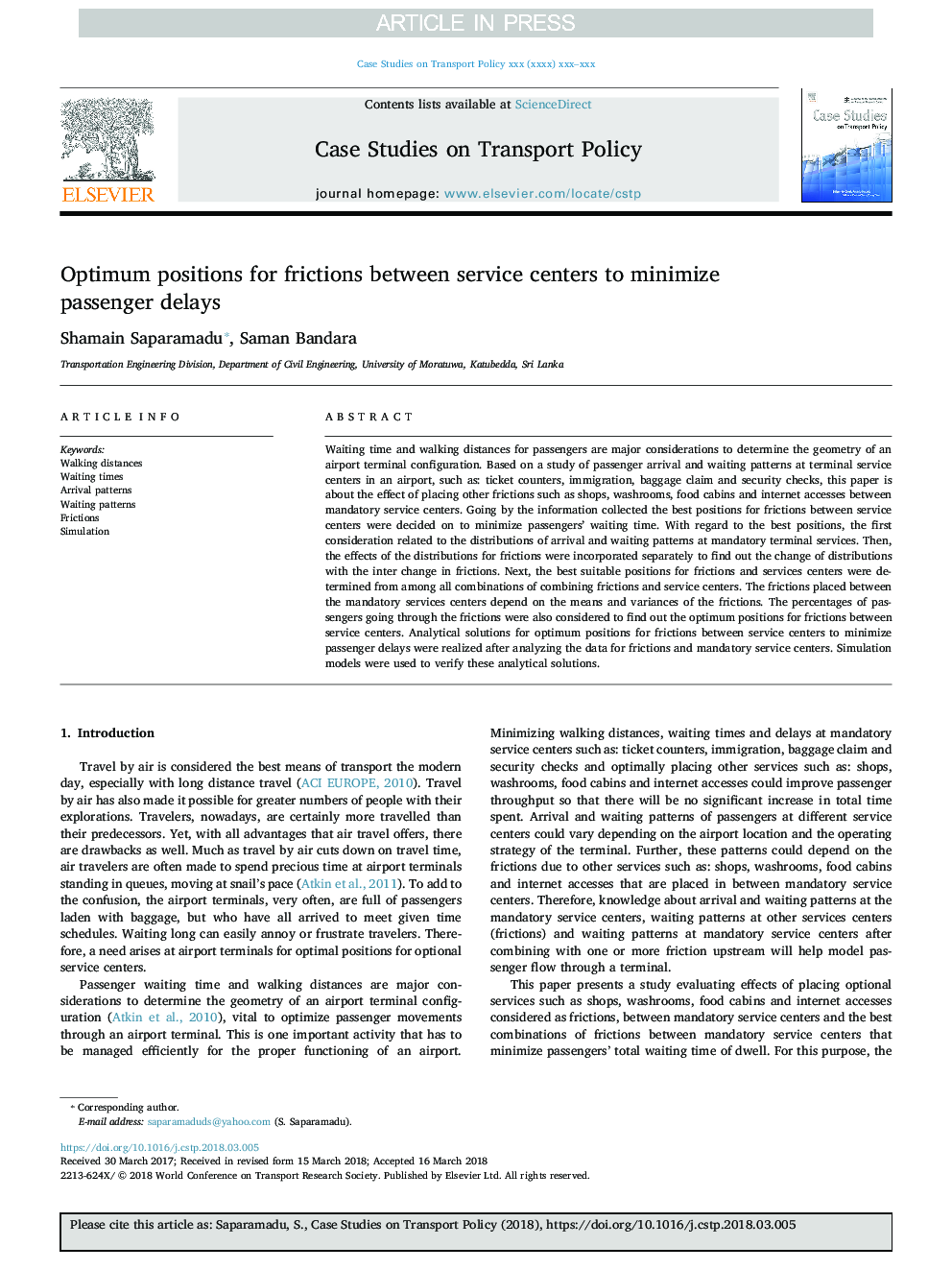| Article ID | Journal | Published Year | Pages | File Type |
|---|---|---|---|---|
| 6702108 | Case Studies on Transport Policy | 2018 | 6 Pages |
Abstract
Waiting time and walking distances for passengers are major considerations to determine the geometry of an airport terminal configuration. Based on a study of passenger arrival and waiting patterns at terminal service centers in an airport, such as: ticket counters, immigration, baggage claim and security checks, this paper is about the effect of placing other frictions such as shops, washrooms, food cabins and internet accesses between mandatory service centers. Going by the information collected the best positions for frictions between service centers were decided on to minimize passengers' waiting time. With regard to the best positions, the first consideration related to the distributions of arrival and waiting patterns at mandatory terminal services. Then, the effects of the distributions for frictions were incorporated separately to find out the change of distributions with the inter change in frictions. Next, the best suitable positions for frictions and services centers were determined from among all combinations of combining frictions and service centers. The frictions placed between the mandatory services centers depend on the means and variances of the frictions. The percentages of passengers going through the frictions were also considered to find out the optimum positions for frictions between service centers. Analytical solutions for optimum positions for frictions between service centers to minimize passenger delays were realized after analyzing the data for frictions and mandatory service centers. Simulation models were used to verify these analytical solutions.
Keywords
Related Topics
Physical Sciences and Engineering
Engineering
Civil and Structural Engineering
Authors
Shamain Saparamadu, Saman Bandara,
